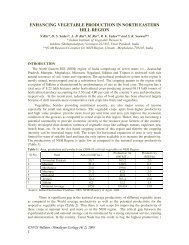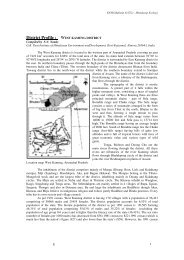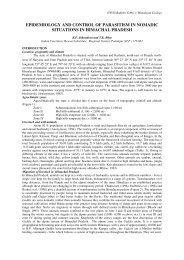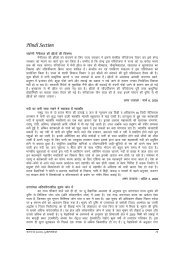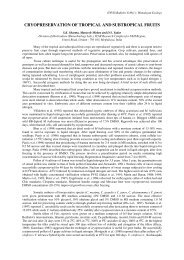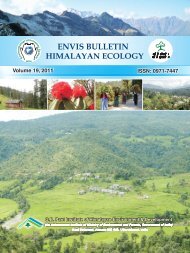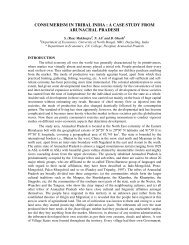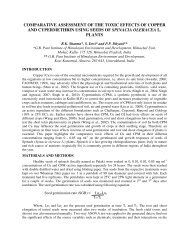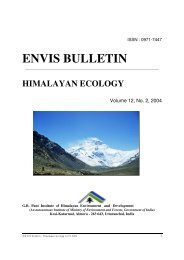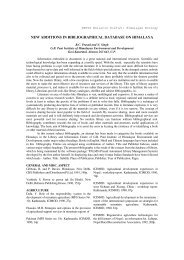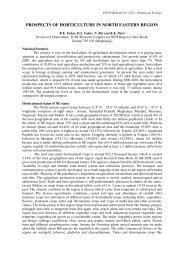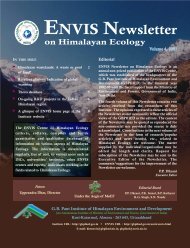Complete PDF - ENVIS Centre on Himalayan Ecology
Complete PDF - ENVIS Centre on Himalayan Ecology
Complete PDF - ENVIS Centre on Himalayan Ecology
Create successful ePaper yourself
Turn your PDF publications into a flip-book with our unique Google optimized e-Paper software.
<strong>Himalayan</strong> <strong>Ecology</strong> and Development<br />
Status of parasitic diseases<br />
In Himachal Pradesh, animals are kept in a variety of husbandry systems from a single cow kept<br />
for the family to large herds and flocks maintained in a range of systems. Transhumance over l<strong>on</strong>g<br />
distances, from the Punjab and to the alpine meadows of the inner Himalayas, is an established practice<br />
although is changing in the c<strong>on</strong>temporary period. The traditi<strong>on</strong>al sheep and goat rearers called Gaddis are<br />
semi-nomadic, who practice large herding of sheep and goats from range to range and their flocks are<br />
migratory in nature through well defined routes (Figure 3) in <strong>Himalayan</strong> pasture (Bhasin and Singh, 1995;<br />
Chakravarti, 1998; Dufffild et al., 1998 and Berkes et al. 1998). These animals remain c<strong>on</strong>fined to the low<br />
plains in Z<strong>on</strong>e I and II and border areas of Punjab during the winter seas<strong>on</strong>, but migrate to the alpine<br />
pastures (3000-4500 m above m.s.l.) in Z<strong>on</strong>e III and IV during spring and summer seas<strong>on</strong>s. The c<strong>on</strong>stant<br />
movement of flocks of sheep and goats over a large area ranging different states may greatly facilitate the<br />
spread of infecti<strong>on</strong> am<strong>on</strong>g livestock. Tables 2-4 present a checklist of most important helminth parasites<br />
observed in comm<strong>on</strong> livestock (cattle, buffalo, sheep, goat etc.) based <strong>on</strong> the studies c<strong>on</strong>ducted in<br />
Himachal Pradesh.<br />
Figure 3. [Source Chakravarti, 1998]<br />
Prevalence and seas<strong>on</strong>al pattern of helminthoses in large ruminants<br />
Table 5 summarises the percentage infecti<strong>on</strong> of gastrointestinal parasites in cattle and buffaloes<br />
during the study period of two phases 1986-90 and 1993-98. Of the 1,552 cattle and 530 buffaloes<br />
examined, 1,354 (87.2 %) and 500 (94.3 %) were found positive for various GI parasites either singly or<br />
in mixed infecti<strong>on</strong>s during 1986-1990 while, these figures were 716 (54.2 %) and 53 (50.5 %) during<br />
1993-1997 out of a total of 1,320 cattle and 107 buffaloes. Figurs 4-7 shows the seas<strong>on</strong>al prevalence of<br />
flukes and str<strong>on</strong>gyles during different m<strong>on</strong>ths in cattle and buffaloes during 1986-90 and 1993-97. In<br />
general, the sec<strong>on</strong>d phase of the study revealed significant (P



